By Representative David Gomberg, House District 10
7/24/2023
Dear Neighbors and Friends,
I spend a lot of time as your legislator looking at our local economies. How do we fill the jobs that are vacant? How do we create better jobs? What investments in local infrastructure are needed and are difficult for small communities to pay for? How do people who live here work here and pay the bills??
This week, I spent some time pouring over data on how we earn and pay the bills. These numbers are only for Lincoln County and it would be difficult to consider similar information for our district in Benton and Lane since we cover only parts of those counties. But the results are illuminating.
As expected, personal earned income was concentrated in hospitality, retail, government, and healthcare. These are total dollars for each sector and not per capita dollars. In other words, we’re looking at the combination of how many people are in a sector and the total amount those people are paid.
Here’s what we saw in 2021:
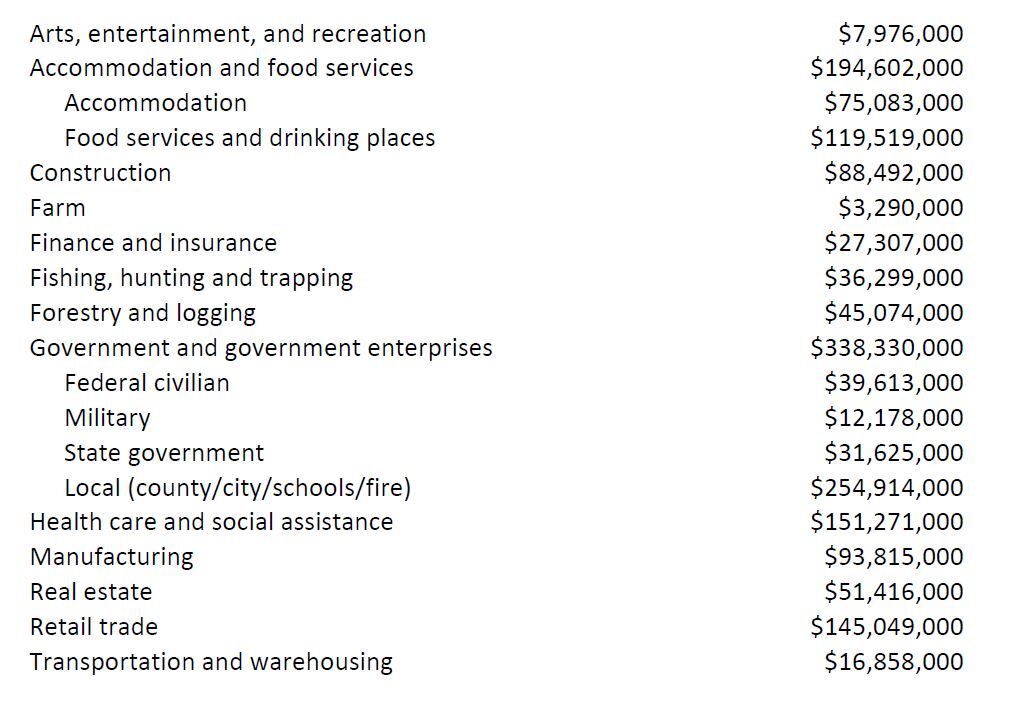 |
That “earned income” from hospitality, fishing, and healthcare are the backbone of our coastal economy is no surprise. But what may be surprising is that transfer payments (money that does not result from the sale of goods or services) and “unearned income” (pensions and investments) are substantially more than payroll, profits and commissions.
Earnings for 2021 totaled $1.21 billion. Transfers and investments combined came to $1.45 billion.
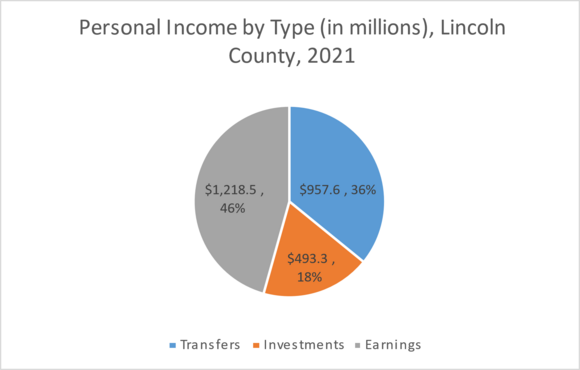
Considering that one-in-three local residents is over the age of 65, these numbers quickly start to make sense.
State economists generally rely on established industry codes and have no ranking for what I call the “Retirement Industry”. I asked once about this during an economic briefing and got a response regarding healthcare and what I was told was the “hospice economy”. I pushed back right away. Yes, we older Oregonians spend money on healthcare. But we also spend it on lawn care, hair care, housing and a more care-free lifestyle.
Transfer payments that continue year-round help pay for jobs in hospitality and local retail during the off-season. And those seniors also contribute their time, ability, and life experience to a variety of local causes in social services, the arts, government, and non-profits.
In 2013, the Lincoln County Board of Commissioners commissioned a detailed assessment of our local economy. Transfer payments, in 2012, represented 27 percent of all personal income in the county, dwarfing such usual suspects as tourism (8%), timber (6.2%) and of course, commercial fishing (9.9%). Fast forward to 2021 and that number jumped to 36% and just shy of one billion dollars – not including any investment income.
 |
Today, transfer payments represent 35.9% percent of all personal income in the county, investment income contributes 18.5%, while earnings from all our local industries and employment round out the total at 45.6%. Remember, these are 2021 figures, and reflect some COVID-era programs that have since dwindled.
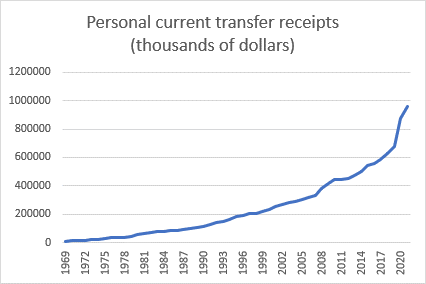
Among the details these kinds of reports highlight is the stark disparities between various Lincoln County communities in terms of median family income. Newport was the highest at just over $47,000. Lincoln City was the lowest with around $29,000. And then there’s Yachats, by some measures the leader in wealth-per-capita in the entire state.
Lincoln County’s “10-Year Economic Update” study from 2013 is a good read. (View the report here.) And I’m pleased to note that the County Economic Development Alliance team is moving ahead with an updated new study.
Thank you to Shaun Barrick, Workforce Analyst for the Oregon Employment Department and the Oregon Coast Community College Small Business Development Center for much of this information.
|
|
Disability affects more than one in four adults in the United States.
Disability Pride Month is celebrated each year in July. It is a time to celebrate disabled persons embracing their disabilities as integral parts of who they are, reclaiming visibility in public and interacting fully with their disabilities, and rejecting shame and internalized ableism. It is a time for the disability community to come together, uplift, and amplify one another’s voices and be heard.
Become a Disability A.L.L.Y. in your community and promote inclusion for all.
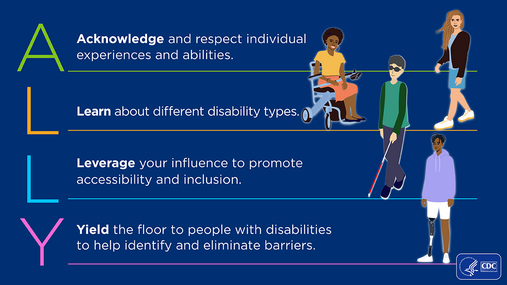
Including people with disabilities in everyday activities and creating accessible environments and equitable opportunities that support them in holding roles similar to their peers who do not have a disability is disability inclusion. This involves more than simply encouraging people to participate in activities. It requires making sure that adequate policies, accessible programs, and inclusive practices are in effect in a community or organization.
Every community member can make a difference and play a part in addressing those barriers. Let’s all take steps to learn how we can increase disability inclusion and accessibility for all to improve the health, well-being, and participation of people with disabilities in your community.
- Click here to learn more about disability and health
- Click here to learn more about disability inclusion
- Click here to learn more about health equity
|
|
Oregon employees who need to take time off work to care for family members or navigate serious illnesses can begin applying for benefits next month through the state’s long-awaited paid family and medical leave program.
The program will cover leave for the birth or adoption of a child, for serious illness or injury, for taking care of a seriously ill family member and for survivors of domestic violence, sexual assault, stalking or harassment. Most workers will be able to take up to 12 weeks of paid leave annually through the program, although those who are pregnant, have given birth or have health issues related to childbirth, may be eligible for up to 14 weeks of paid leave.
Employees can apply for benefits online beginning August 14 hrough the Oregon Employment Department, but employees will only be eligible to receive benefits for leave taken on or after September 3. Payments will begin going out in mid-September.
State lawmakers approved the program in 2019, making Oregon one of just 11 states, along with Washington D.C., to offer paid family and medical leave. The minimum weekly benefit an Oregon worker will receive through the program in fiscal year 2024 is $63.48 while the maximum is $1,523.63.
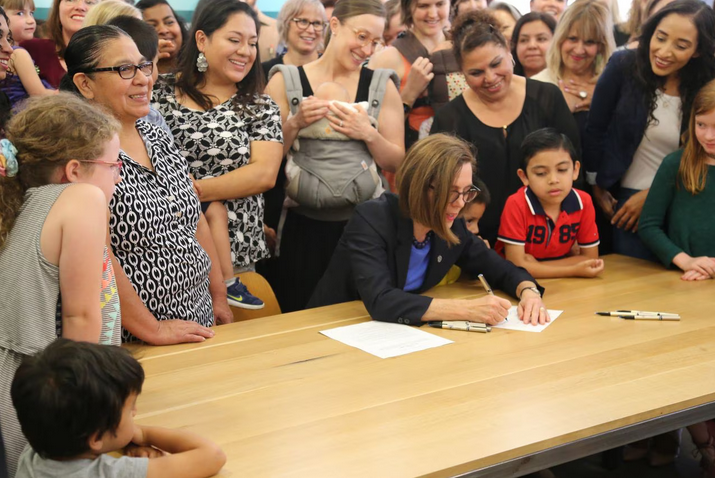
Four years after Governor Kate Brown signed the state policy into law, Paid Family Leave benefits will be available in September.
Starting January 1, workers have been paying 0.6% of their gross wages every paycheck and big employers contributed an additional 0.4% to fund the program. The eight-month delay between the beginning of collections and the start of payments was needed to build a fund to pay benefits to workers.
I supported this new program but also argued it would fall hard on smaller businesses. It is hard enough to find permanent employees in the current environment. Finding temporary replacements will be even harder. In response, a grant program was added to the bill for small businesses to cover costs such as overtime or a temporary replacement worker. Employers with fewer than 25 employees will not be required to pay into the program but they can choose to pay into it if they wish to access grants. Those small employers will still need to collect and remit contributions from employees even if they decline to pay into the program themselves.
You can find more details here. You can read more about program delays here.
|
|
 Earlier this week, Facility Director Ashley Cushing showed Commissioner Kaety Jacobson and I around the soon-to-open HOPE Center in Lincoln City.
Earlier this week, Facility Director Ashley Cushing showed Commissioner Kaety Jacobson and I around the soon-to-open HOPE Center in Lincoln City.
When complete, HOPE Center will provide 69 emergency and transitional housing beds, including 12-14 emergency beds and 55 transitional housing beds in dormitory-style rooms for 3-4 people per room. There are also two private rooms for participants with children.
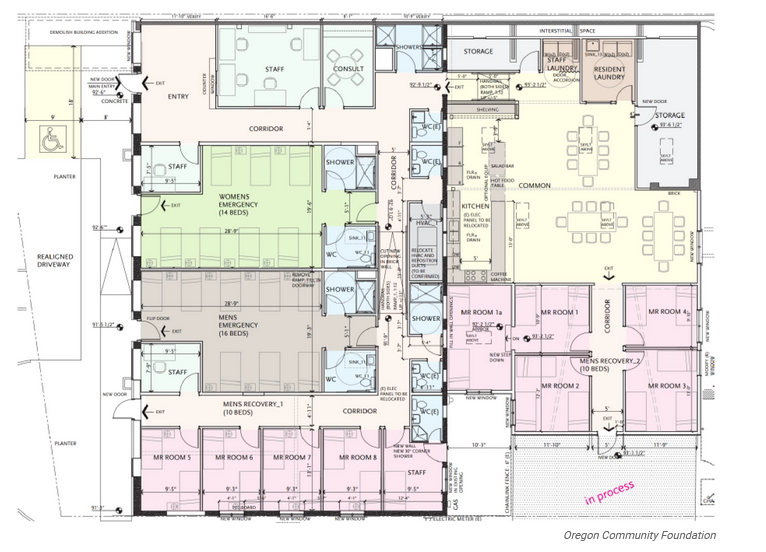
Plans for the lower floor of the building. The Lincoln City HOPE Center will include both emergency bedding and long-term dormitory housing.
Lincoln City, Helping Hands Reentry Outreach Centers, and the state through Project Turnkey are working together to address this critical need.
I have been a supporter of Project Turnkey since the concept was introduced in 2020 to fund the conversion of dilapidated hotels and motels into needed shelter and transition space.
That new model took the form of a grant program administered by the Oregon Community Foundation that has allowed agencies to purchase former motels across the state at a cost of $75 million to add more than 900 units of emergency shelter. Thirteen Oregon counties purchased 19 properties that account for a 20% increase in Oregon’s year-round emergency shelter capacity. Those counties are: Multnomah, Washington, Yamhill, Deschutes, Jackson, Lincoln, Lane, Douglas, Marion, Coos, Umatilla, Klamath and Benton.
|
|
The coming week is filled with constituent appointments to discuss causes and concerns.
Later today I’ll be working to help communities impacted by the 2020 fires repair their local roads. On Thursday I’ll run to Salem for the formal signing of the Housing Package and budget. On Friday I’ll be the guest speaker at the Newport Chamber of Commerce. And on Saturday, Susan and I will be in Benton County.
Enjoy these glorious summer days!
|
|
email: Rep.DavidGomberg@oregonlegislature.gov
phone: 503-986-1410
address: 900 Court St NE, H-480, Salem, OR, 97301
website: http://www.oregonlegislature.gov/gomberg


